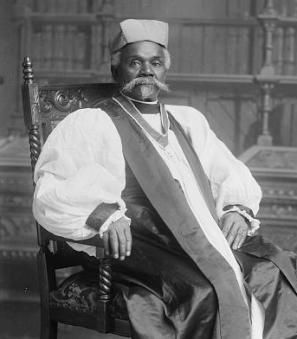A Sympathy of Mind Which Is Most Unusual: Two Men on the Titanic
On the night that the RMS Titanic would descend beneath the freezing waters of the Atlantic Ocean, Major Archibald Butt and artist Francis Millet were playing cards in the smoking room reserved for first-class passengers.[1] The two men, close friends and housemates in Washington, D.C., were returning from abroad upon the opulent ocean liner when the ship collided with an iceberg and sank, taking the lives of approximately 1,500 people. Millet and Butt would be among those sent to a watery grave, and would be honored by Washington D.C. and by President William Howard Taft through the construction of a memorial fountain near the White House.
Francis Davis “Frank” Millet was a mural painter and journalist who had attended upon many of the central events in American history. He had served as a drummer boy in the American Civil War, had been the decorations director for the World’s Columbian Exposition in Chicago, and had reported on the Spanish-American War. In his long and wandering life, he had also made prominent friends: author Mark Twain and sculptor Augustus Saint-Gaudens were the two witnesses to Millet’s marriage in Montmartre to American Elizabeth “Lily” Merrill.[2] While Frank and Lily Millet had maintained a home in the English countryside together, he was often in the United States completing commissions and in 1910, he moved into the G Street home of Major Butt in Washington D.C.[3] As he boarded the Titanic at Cherbourg, Millet was serving as the Vice Chairman of the American Commission of Fine Arts and was returning to Washington to help finalize designs for the Lincoln Memorial.[2]
Major Archibald Willingham DeGraffenreid Clarendon Butt, known to most of Washington as “Archie,” was the military aide to Taft and had been military aide to President Theodore Roosevelt. Butt had served as a Washington correspondent for several Southern newspapers, and had joined the U.S. Army at the outbreak of the Spanish-American War, serving in both the Philippines and Cuba.[4] His efficient service and Southern manners had caught the attention of Roosevelt, who appointed him as his Presidential military aide. Butt became indispensable to both Roosevelt and his family, becoming manager of the White House stables and visiting the Roosevelts at their New York home, Sagamore Hill. When Roosevelt was replaced by his chosen successor, Taft, Major Butt soon became close friends with the new president and his family. After Helen Taft suffered a stroke in May 1909, Butt took over some of her ceremonial and management duties as First Lady.[5]
The departure of Major Butt and Frank Millet for Rome had been a news item due to Major Butt’s notoriety. A long description was given of his dandified ensemble as spoke to reporters and posed for the photographers.
He wore a bright copper-colored Norfolk jacket fastened by big ball-shaped buttons of red porcelain, a lavender tie, tall batwing collar, trousers of the same material as the coat, a derby hat with broad, flat brim, and patent leather shoes with white tops. The major had a bunch of lilies in his buttonhole.[6]
Butt’s departure, however, was also the result of a political crisis that left him increasingly anxious, conflicted and ill in Washington. Roosevelt was frustrated by Taft’s 1910 loss of a Congressional majority and by his timidity in carrying forward bold progressive policies. Loyal to both the past and current Presidents and forced to accompany Taft on a grueling pre-campaign trip through 28 states in fall 1911, Butt had contracted a physical ailment linked to stress and exhaustion which caused him to lose twenty pounds.[7]
It had been the suggestion of Frank Millet that Butt escape the political conditions in Washington for a restorative trip to Europe in the Spring of 1912, and Millet had gone so far as to intercede with the President on his friend’s behalf. One friend of the pair recounted the story to The Washington Post.
Millet noticed that Major Butt was looking paler than usual and generally run down. He announced to us his determination that Major Butt should return with him to Rome for a little rest…Major Butt was requested to ask for leave so that he might make the trip, but he would not do so. Millet then went to the President and made the request that he urge Major Butt to go along. There was a good deal of chaffing about it in Washington, but they finally put off together.[8]
After spending several weeks in Rome with Millet, Butt would visit the American embassies in Berlin and Paris, then visit his brother living in England. Butt would board the Titanic at Southampton, England, ready to return to Taft’s side in Washington, yet still riven by anxiety.[9]
There has been speculation regarding the precise relationship of Major Butt and Frank Millet, as they were housemates and attended social engagements together. Millet left behind letters detailing a homosexual relationship conducted in the winter of 1875 while he was living in a villa in Venice with American poet Charles Warren Stoddard. After Stoddard left him, Millet was devastated, and wrote letters to Stoddard which express a frank and desperate longing for the man he referred to as his “butterfly.” By 1878, however, the letters to Stoddard had ended, and Millet declared himself in love with American Lily Merrill, whom he had met in Paris. Merrill would be his wife and have his three children, although Millet often lived apart from his spouse.[10]
Major Butt was more discreet than Millet in his letters and correspondence, yet scholars such as Hugh Brewster who have examined these documents suggest that there exist indications of his sexuality. Butt was extremely attached to his mother, and during his three years in the Philippines, he had missed her so desperately that he arranged for her to visit him for an extended period in the war zone. Following her death, Butt maintained photographs and other items around his home which evoked her memory.[11] Brewster also notes that Butt, a lifelong bachelor, was very conscious of his appearance and attire, as is indicated by the seven trunks of clothing which he had brought with him to Europe.[12]
Following their deaths on the Titanic, contemporaries described the two men as extremely close friends. One friend described the pair by utilizing an allusion to legend. “No Damon and Pythias friendship could have been closer than the friendship of Maj. Butt and Millet.”[8] A naval lieutenant who had lived with Butt and Millet for a time described them as having “a sympathy of mind which is most unusual.”[11]There is no conclusive evidence that the relationship between Butt and Millet was anything more than companionship, there remains a possibility that the artist and the president’s aide shared romantic feelings.
Butt and Millet enjoyed the first class accommodations on the Titanic, and Millet wrote to a friend about the ship’s luxurious staterooms. On the final night of the voyage, Butt was among the prized guests at a dinner given in honor of the ship’s captain, for he could tell stories of Washington and the White House. Unfortunately for the dinner’s hostess, Butt instead spent the night engrossed in conversation with Marian Thayer as he recounted his nervousness about the 1912 election.[13] Following dinner, Butt and Millet were playing cards in the smoking room when the Titanic struck the fatal iceberg some minutes before midnight. After being assured that the ship was in no distress, the two men returned to cards until 12:45, when they exited the smoking room, now aware of the mounting danger.[14]
As the ship began to sink into the Atlantic, Butt’s recognizable figure was seen helping women and children into the lifeboats, and Frank Millet too stood on the ship’s deck and aided in the rescue of others. A number of survivors told stories of the heroism and sacrifice of these two men, who stood on deck as the Titanic continued to sink beneath their feet.[15] As his body was later recovered, we know that Frank Millet likely died of hypothermia and exposure in the freezing waters of the North Atlantic. As he shivered beneath the stars in his final moments, who or what occupied the last thoughts of Frank Millet?[16]
Following news of the sinking, Washington was frantic for information about Butt and Millet, though many feared that as men of courage, the pair had sacrificed their lives.[17]
On April 17, The Baltimore Sun reported Taft had given up hope regarding the survival of his favorite aide following the receipt of a telegraph stating that Butt was not aboard the Carpathia, the ship which had rescued all Titanic survivors. The article described the feelings of despair that circulated as Washington mourned Major Butt.
“Deep sorrow is felt at the White House and through all Washington that knew Major Butt over the death of the popular young officer. All social functions at the Executive Mansion have been canceled, and the President’s family feels the loss almost as keenly as though one of the immediate members were dead.”[4]
While Millet’s body was identified and recovered following the sinking, Major Butt’s body was not, leaving Taft and others in Washington deeply bereft.[16] Taft delivered a eulogy to Major Butt in Butt’s hometown of Augusta, Georgia while on the edge of tears. He praised Butt’s self-sacrifice and admitted that the man had been like family to him.
Never did I know how much he was to me until he was dead. Lacking nothing of self-respect and giving up nothing he owed to himself, he conducted himself with a singleness of purpose and to the happiness and comfort of the President who was his chief. To add many fine qualities he added loyalty, and when he became one of my family he was as a son or a brother...Self-sacrifice had become a part of his nature. If Archie would have selected his time to die he would have taken the one God gave him.[18]
At a Washington memorial service, Taft broke into tears in the midst of his eulogy to Butt and could not continue.[19]
Following the obsequies for the two men, a memorial to Butt and Millet was proposed in Congress by Georgia Senator Augustus Bacon.[20] On August 24, 1912, a Joint Resolution authorizing the erection of a Joint memorial to Major Butt and Francis Millet was passed by Congress.[21] In January 1913, President Taft approved the design of Daniel Chester French for the memorial, to be located on the ellipse just beyond the White House South Lawn.[22]
On the fountain, there are two bas-reliefs on the central shaft rising from a basin of Tennessee marble. On the North Side, facing the White House, is a knight in armor representing Major Butt, while on the South Side, facing the Lincoln Memorial, there is a classical maiden with a pallet and a brush, symbolizing Millet and his vocation. The inscription on the monument reads “In memory of Francis Davis Millet-1846-1912-and Archibald Willingham Butt-1865-1912, This monument has been erected by their friends with the sanction of Congress.[21]
There was no dedication service for the memorial in October 1913, as the 1912 presidential election which Major Butt had dreaded ended with the defeat of both Roosevelt and Taft and the election of Democrat Woodrow Wilson. The Butt-Millet Memorial Fountain still stands in the President’s Park as a testament to two of the men who lost their lives on the tragic night when the Titanic sank beneath the sea.
Footnotes
- ^ Hugh Brewster, Gilded Lives, Fatal Voyage: The Titanic’s First Class Passengers and their World, 176. Crown Publishers, New York. 2012.
- a, b Brewster, 7-8.
- ^ Major Butt’s Home Sold: Oscar Underwood Purchases Residence of Later Military Aid to President. The Washington Post. November 22, 1912.
- a, b Anxious Thousands Await Carpathia’s Arrival: Major Butt Given Up. The Baltimore Sun. April 18, 1912.
- ^ Brewster, 39-41.
- ^ Major Butt’s Suit a Wonder: Sails Away in it for Rome, the Envy of the Ship. The New York Times, March 3, 1912
- ^ Brewster, 41-42.
- a, b Millet planned Trip: Insisted that Major Butt Accompany Him to Europe. The Washington Post, April 18, 1912.
- ^ Brewster, 44-45.
- ^ Brewster, 50-51.
- a, b Death of Major Butt mourned by Washingtonians. The Washington Times. April 19, 1912.
- ^ Brewster, 38.
- ^ Brewster, 150-152.
- ^ Brewster, 163-164.
- ^ Brewster, 208.
- a, b Millet’s Body Found: Artist Victim of Titanic on the Mackay-Bennett. The Washington Post. April 28, 1912
- ^ Dead May Include Washington Men: Fears for Butt, Moore, Gracie and Millet Cause Gloom. The Washington Post. April 16 1912.
- ^ Taft Lauds Major Butt: Tears in President’s Eyes as he Honors Dead Aid. The Washington Post. May 3, 1912.
- ^ Brewster, 260
- ^ Asks Memorial Site: Senator Bacon Would Honor Butt and Millet. The Washington Post. May 17, 1912
- a, b The fountain in memory of Francis Davis Millet, Archibald Willingham Butt, 1913. Library of Congress https://archive.org/details/fountaininmemory00wash
- ^ Brewster, 268.


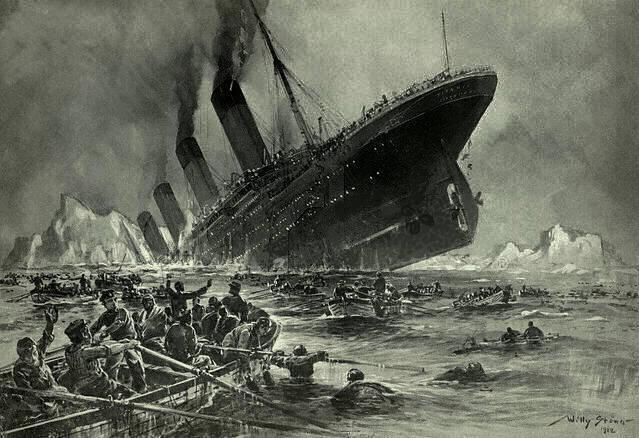
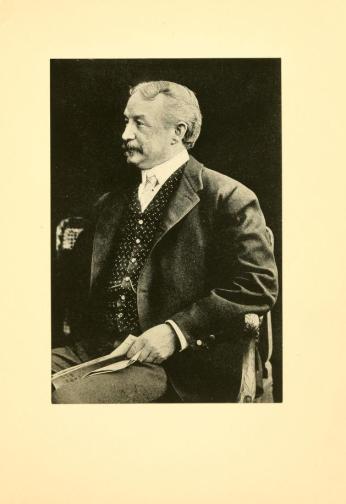
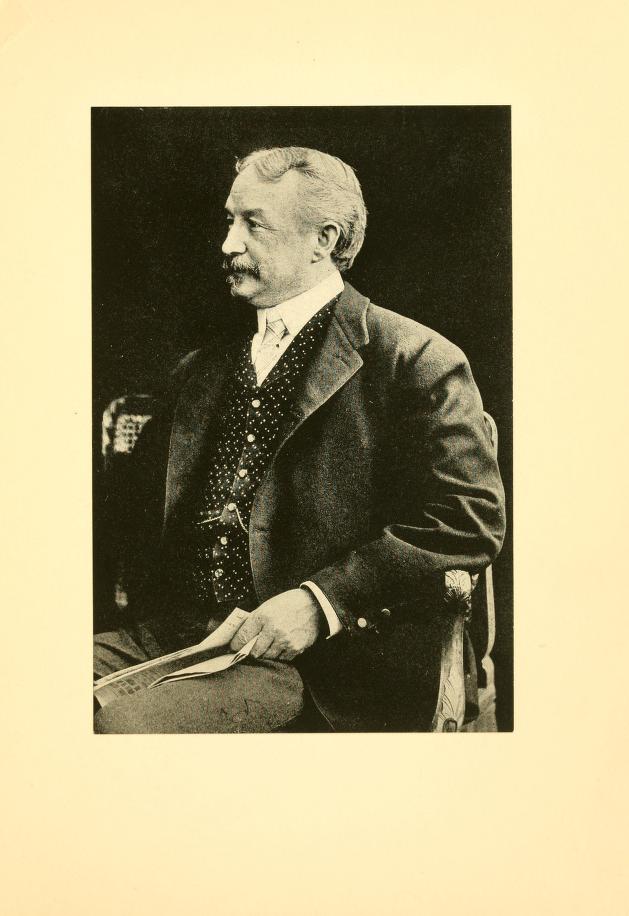
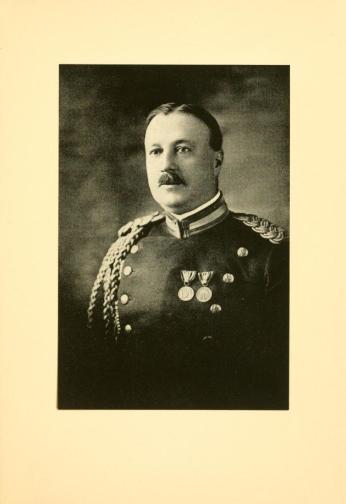
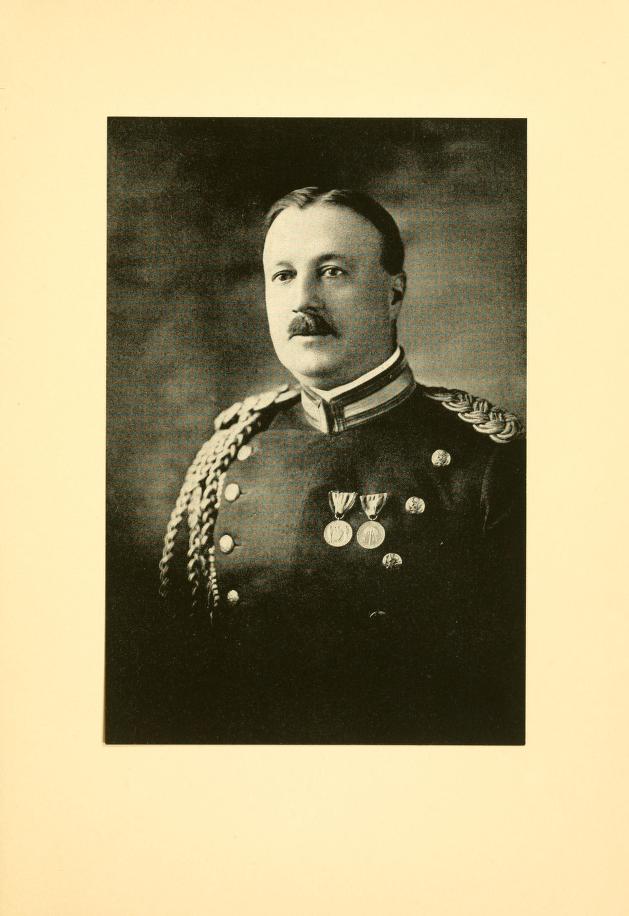
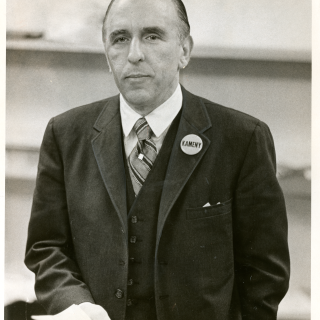

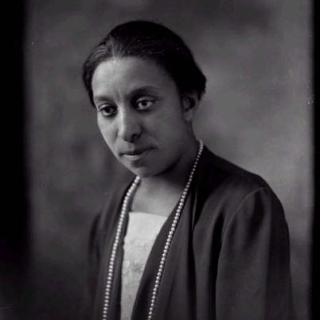
![Sketch of the mythical fuan by Pearson Scott Foresman. [Source: Wikipedia]](/sites/default/files/styles/crop_320x320/public/2023-10/Goatman_Wikipedia_Faun_2_%28PSF%29.png?h=64a074ff&itok=C9Qh-PE1)











